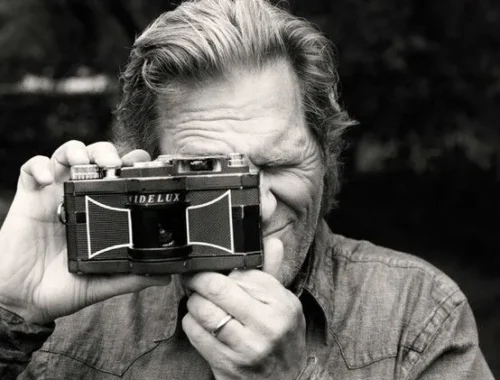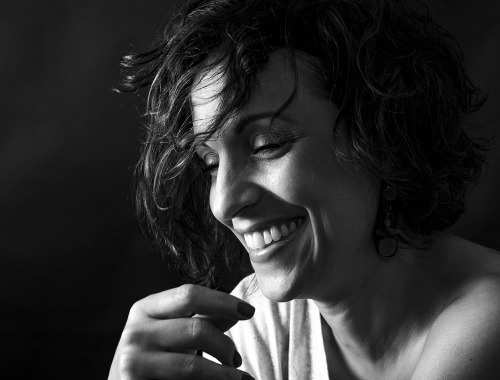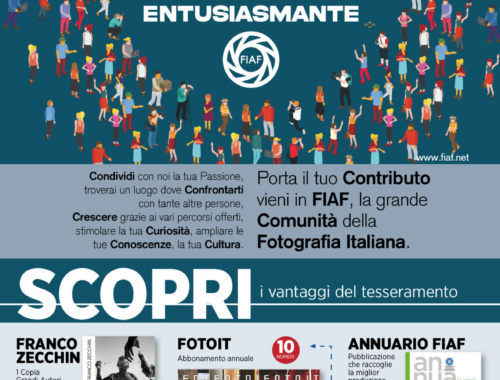La fotografia e il tempo
Quando parliamo di fotografia parliamo anche e, soprattutto, di tempo: tempo d’esposizione innanzitutto, cioè uno dei parametri che servono per scattare una fotografia.
Il tempo e la fotografia sono legati intrinsecamente da molteplici fattori. Abbiamo più volte citato Roland Barthes e il concetto di “è stato e sarà” dello scatto fotografico inteso come il momento dello scatto per l’uno e il momento della morte della fotografia: una piccola comparazione con il luogo e il tempo che furono all’interno della cornice dell’immagine e il destino ineluttabile di tutto ciò che la fotografia è, è stata, imprime ed esprime.
Sottolineiamo, qui, un altro aspetto dello stretto legame tra fotografia e tempo: la sua rappresentazione visiva e metaforica nelle immagini che caratterizzano la fotografia.
Il tempo, legato visivamente al suo referente più logico e intuitivo, viene raffigurato dalla presenza nell’immagine di un oggetto che ne scandisce la peculiarità: l’orologio.
In alcune immagini raffigurato per intendere lo scorrere del tempo, sua funzione primaria (anche se non sempre svolta in maniera egregia!) e in altre come simbolo di una verità assoluta: al tempo nessuno sfugge (nemmeno una fotografia, aggiungerei). Il tempo rappresenta la metafora della vita, il movimento, l’attesa: tutti elementi che potrebbero racchiudere una serie di sentimenti che avvolgono l’Operator e lo Spectator. In alcune immagini, la rappresentazione del tempo ci assale e ci mette malinconia perché sappiamo, a malincuore, che tutto nella vita ha una fine. In altre ci aiuta a comprendere, a studiare un luogo, un tempo, la società e come tutto questo cambia. Il tempo come storia, quindi, come testimonianza.
In una fotografia, scriveva Roland Barthes in La camera chiara (1980), c’è l’ineluttabile morte del soggetto, perché lui, il soggetto, non lo sa, ma già è morto. Se ci pensiamo bene è quella malinconia che ci assale quando ci rendiamo conto, quando siamo consapevoli, che anche noi faremo la stessa fine (ahimè!).
Comunque, più che parlarvi di tempo e orologi, in quest’articolo, vorrei mostrarvi alcune immagini di fotografi che hanno saputo spiegare un concetto astratto come il tempo fermandolo, ma, allo stesso tempo (permettetemi questa ridondanza) , donandogli la sua caratteristica di moto perpetuo.

Alfred Eisenstaedt lo ricordiamo forse più per la famosa foto del bacio tra un marinaio e un’infermiera scattata a New York sulla 5th Avenue dopo l’annuncio del Presidente Truman che annunciava la fine della seconda guerra mondiale (14 agosto 1945).
Nell’immagine di Eisenstaedt, scattata nella stazione della Pennsylvania , abbiamo la rappresentazione visiva di come il tempo possa essere raffigurato in fotografia: l’icona che rimanda alla nozione fisica del tempo in primo piano con l’orologio che segna le 08:13; il tempo come simbolo, inteso come attesa delle persone che aspettano l’arrivo del treno ferme con il bagaglio a terra; altro simbolo, quello del suo scorrere, con le persone il cui treno è già arrivato e devono uscire dalla stazione. Fra l’attesa e l’arrivo del treno abbiamo in mezzo un brulicare non solo di persone ma anche e, soprattutto, dei loro sentimenti: la rabbia di avere perso il treno; l’emozione di riabbracciare una persona amata, l’ansia di intraprendere un viaggio. E ancora, la pazienza dell’attesa o per il ritardo del treno; l’eccitazione per il viaggio; la solitudine di non avere nessuno accanto. Potrei elencare tantissime emozioni e tanti stati dell’anima, ma quello che voglio sottolineare è che, in un unico scatto, Eisenstaedt ha saputo rappresentare il tempo in una moltitudine di elementi visivi e percettivi.

Josef Koudelka attendeva l’inizio di una manifestazione organizzata contro l’occupazione russa in Cecoslovacchia (adesso Repubblica Ceca) che sarebbe dovuta scoppiare alle 12:00. In attesa dal balcone di una sua amica, Koudelka è stato l’unico testimone di quella manifestazione mancata. I Cechi, sapendo che quella manifestazione sarebbe diventata una dichiarazione di guerra, sono rimasti nelle proprie abitazioni. La nostra icona del tempo, l’orologio, indossato proprio da Koudelka, rappresenta una testimonianza del non “è stato”, del non rappresentato, del non essere e, al contempo, la testimonianza effettiva dell’attesa per l’inizio della manifestazione.

Nella fotografia di Giacomelli il tempo viene rappresentato nel suo finire, rappresentazione qui della morte o, dovrei direi, dell’avvicinarsi all’imminenza. L’icona, in questo caso, è un oggetto svuotato dei suoi elementi, senza lancette. Il tempo non ha modo di esistere, viene svuotato della sua anima. Anima che sta per lasciare anche l’altra protagonista della fotografia che, alla fine del suo viaggio terreno, dimostra la stanchezza del corpo, ma, in questa malinconica testimonianza, riesce a sfoggiare il vezzo della sua vanità (l’orecchino anche se sfuocato, rappresenta l’orgoglio di una donna, la sua femminilità).
Come abbiamo visto, il tempo viene raffigurato in più sfaccettature: come movimento, testimonianza, come rappresentazione dell’emozioni, degli stati d’animo e della morte.
E’, per eccellenza, il miglior rappresentante del significato e significante fotografico. Il tempo possiede i requisiti di entrambe le facce del segno: il piano del contenuto e quello dell’espressione; senza trascurare l’elemento tecnico a cui appartiene realmente, quindi come azione di scatto.
VI invito a rappresentarlo in una delle vostre immagini o a cercarlo dentro fotografie già scattate.
ENGLISH VERSION
Photography and time
When we talk about photography we also talk, and above all, about time: exposure time first and foremost, that is, one of the parameters needed to take a photograph.
Time and photography are intrinsically linked by multiple factors. We have repeatedly cited Roland Barthes and the concept of “has been and will be” of the photographic shot understood as the moment of the shot for the one and the moment of the death of photography: a small comparison with the place and time that were inside the image frame and the ineluctable destiny of everything that photography is, was, imprints and expresses.
We underline, here, another aspect of the close link between photography and time: its visual and metaphorical representation in the images that characterize photography.
Time, visually linked to its most logical and intuitive referent, is depicted by the presence in the image of an object that marks its peculiarity: the clock.
In some images depicted to understand the passage of time, its primary function (even if not always carried out in an excellent manner!) and in others as a symbol of an absolute truth: no one escapes time (not even a photograph, I would add). Time represents the metaphor of life, movement, waiting: all elements that could contain a series of feelings that envelop the Operator and the Spectator. In some images, the representation of time assails us and makes us melancholy because we know, reluctantly, that everything in life has an end. In others it helps us to understand, to study a place, a time, society and how all this changes. Time as history, therefore, as testimony.
In a photograph, Roland Barthes wrote in La camera chiaro (1980), there is the inevitable death of the subject, because he, the subject, does not know it, but he is already dead. If we think about it, it is that melancholy that assails us when we realize, when we are aware, that we too will end up the same way (alas!).
However, rather than talking to you about time and clocks, in this article, I would like to show you some images of photographers who have been able to explain an abstract concept like time by stopping it, but, at the same time (allow me this redundancy), giving it its characteristic of motion perpetual.

Photograph by Alfred Eisenstaedt – Pennsylvania Station – 1943.
We remember Alfred Eisenstaedt perhaps more for the famous photo of the kiss between a sailor and a nurse taken in New York on 5th Avenue after President Truman’s announcement announcing the end of the Second World War (14 August 1945).
In Eisenstaedt’s image, taken in the Pennsylvania station, we have the visual representation of how time can be depicted in photography: the icon that refers to the physical notion of time in the foreground with the clock showing 08:13; time as a symbol, understood as the wait of the people waiting for the arrival of the train stopped with their luggage on the ground; another symbol, that of its passing, with the people whose train has already arrived and must leave the station. Between the wait and the arrival of the train we have a swarm not only of people but also, and above all, of their feelings: the anger of having missed the train; the emotion of hugging a loved one again, the anxiety of embarking on a journey. And again, the patience of waiting or for the delay of the train; the excitement of the journey; the loneliness of having no one next to you. I could list many emotions and many states of the soul, but what I want to underline is that, in a single shot, Eisenstaedt was able to represent time in a multitude of visual and perceptive elements.

Photograph by Josef Koudelka – View of Wenceslas Square – 1968
Josef Koudelka was waiting for the start of an organized demonstration against the Russian occupation in Czechoslovakia (now the Czech Republic) which was due to break out at 12:00. Waiting on the balcony of a friend of his, Koudelka was the only witness to that failed demonstration. The Czechs, knowing that the demonstration would become a declaration of war, remained in their homes. Our icon of time, the watch, worn by Koudelka himself, represents a testimony of the not “has been”, of the not represented, of not being and, at the same time, the effective testimony of the wait for the start of the event.

Photograph by Mario Giacomelli – from the Ninna Nanna series – 1985/87
In Giacomelli’s photography, time is represented at its end, a representation here of death or, I should say, of the approach to imminence. The icon, in this case, is an object emptied of its elements, without hands. Time has no way of existing, it is emptied of its soul. Soul that is also about to leave the other protagonist of the photograph who, at the end of the earthly journey, demonstrates the tiredness of her body, but,
Cosa mostra la fotografia
L'immagine della donna
Potrebbe anche piacerti

JEFF BRIDGES
7 Agosto 2023
Personalità
9 Gennaio 2023